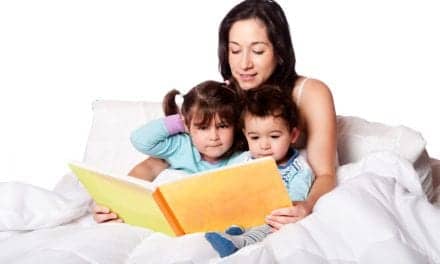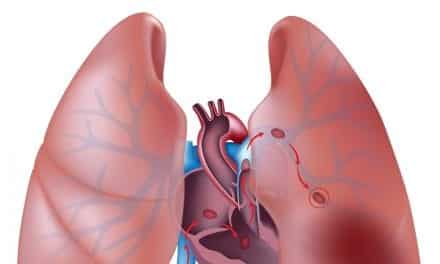A study at Dana Children’s Hospital in Tel-Aviv characterized normal PSG values in children and adolescents and set reference values for pediatric PSG.
By Shimrit Uliel, MD
Overnight polysomnography (PSG) is the gold standard for the diagnosis of sleep-disordered breathing in children, adolescents, and adults. Pediatric PSG guidelines for diagnosing sleep-disordered breathing in infants and children have been published by the American Thoracic Society (ATS).1 The ATS statement presents the clinical indications for pediatric PSG and establishes the technical standards for performing PSG, the basic requirements for analyzing the PSG, and the way that results should be reported. While there are well-established normal values of respiratory parameters during sleep for adults, a paucity of data exists regarding normal values for children and adolescents. Adult criteria and reference values for the evaluation of sleep-disordered breathing have been shown to be inapplicable to children.2,3 Physiological differences between adults and children—as well as differences in the epidemiology, causes, pathophysiology, and clinical manifestations of sleep-disordered breathing—require the establishment of normal reference PSG values in children based on age-specific normal values.
A few studies4-9 have presented normal values for respiratory variables in children. Each of these reports, however, is limited to a very narrow age range and deals with only one or very few of the respiratory variables recorded and analyzed in PSG.
To date, there have been only two studies that prospectively address, and were specifically designed to establish, normal respiratory reference values during sleep comprising the full spectrum of pediatric PSG. The first, by Marcus et al,10 was reported a decade ago and was based on 50 normal infants and children aged 1 to 16 years. This investigation was challenged only recently by a very similar study of 70 children that was presented at the 2002 ATS annual meeting.11 These studies also correlated respiratory variables with sleep stages.
In both studies, children were recruited at random from schools, kindergartens, and the families of hospital employees. Only children who were assessed as normal subjects without sleep-disordered breathing, based on clinical history, were included. Volunteers with risk factors for obstructive sleep apnea (OSA) including snoring, craniofacial abnormalities, chronic illness (including asthma) or chronic medication use, obesity (weight >120% of ideal weight or body mass index >25), or a history of adenoidectomy, tonsillectomy, or other airway surgeries were excluded. All participants underwent full overnight PSG, and their respiratory variables were simultaneously and continuously measured and recorded using a computerized system. The data were interpreted according to ATS guidelines.1
Central apnea is defined as the absence of airflow at both nose and mouth, as measured by the thermistor and the capnograph, associated with absence of movement of the chest and abdominal walls. Only central apneas of 10 seconds or more and apneas of any length that were accompanied by desaturation were considered significant. Central apneas occurring immediately following a sigh were considered separately. Central apneas occurred frequently (in 33% to 37% of tested children), lasted for 10 to 20 seconds, and tended to appear mainly during rapid–eye-movement (REM) sleep. Marcus et al10 found one to five central apneas per child, per night, with only one child having central apneas accompanied by desaturation below 90% (compared with 8% in the report of Uliel and Sivan.11 The apnea index was 0.4±0.28, so the upper limit for the rate of central apnea in children older than 1 year is one per hour of sleep (mean ±2 SDs), and the longest duration is 20 seconds (mean ±2 SDs).
Obviously, since central apneas are not infrequent in healthy children, the most important question is whether these central apneas are associated with desaturation. It is, therefore, recommended that a central apnea be considered abnormal if it is associated with desaturation below 90%, regardless of the length of apnea. The tendency of central apneas to occur during REM sleep has also been shown in adults. Central apneas during REM sleep are more frequently associated with desaturation, as well. One explanation is that the decreased functional residual capacity during REM sleep represents a reduced oxygen reserve.
Obstructive apnea is defined as cessation of airflow at the nose and the mouth, as measured by the thermistor and the capnograph, while respiratory effort continues (as movements of the rib cage and abdomen). The number and duration of obstructive apneas of any length should be considered. In adults, the main clinical manifestation of the obstructive sleep apnea syndrome (OSA syndrome) is obstructive apnea (a complete, short cessation of airflow that resolves in association with arousal), but the presentation in children ranges over a wide spectrum from partial airway obstruction that may last for relatively long periods of time to intermittent obstructive apnea to the complete obstructive event that characterizes OSA syndrome in adults. Each of these expressions has the potential to disrupt sleep architecture and normal ventilation during sleep.
Unlike central apneas, obstructive apneas are uncommon among healthy children and adolescents. Hence, caution should be used when defining a normal range for the obstructive-apnea index. Calculation of the number of obstructive apneas during total sleep time for the entire study population produces a very low index (0.1±0.5).10 Such an approach is misleading, however, and may result in underestimation of obstructive apneas (and, hence, OSA syndrome) in a high percentage of children with OSA syndrome. When the obstructive apnea index was calculated only for children who exhibit obstructive apneas, it was found to be 0.56±0.94 or 0.37±0.41.11 It is, therefore, recommended that the normal reference range for obstructive apnea be 1 to 1.2. The length of the apneas was also comparable in both studies (10 or fewer seconds10 or 13 or fewer seconds11). Similar data were obtained by others within a narrow age range (13.3±2.1 years).4 These findings differ significantly from those for adults, which define normal reference values as five or more complete obstructive apnea events per hour of sleep.2,12,13 This emphasizes the importance of using pediatric reference values in the pediatric population.
Mixed apnea is defined as an apnea with both central and obstructive components, in any order, with the central component lasting 3 seconds or more. The number and duration of mixed apneas should be measured. Mixed apneas are rare in children.
Hypopnea is defined as a 50% or greater decrease in the amplitude of the nasal/oral airflow signal, as measured by the thermistor or the nasal pressure cannula, and it is often accompanied by hypoxemia or arousal. Hypopnea is further characterized as obstructive (if the reduction in airflow is associated with paradoxical chest and abdominal movement) or central (if associated with an in-phase reduction in the amplitude of the chest and abdominal signals). Hypopneas are very rare in healthy children, but quite frequent in children with OSA syndrome. Hence, hypopneas should be analyzed with caution and there should be a search for accompanying hypoxemia, hypercarbia, or arousal.
Because episodes of complete airway obstruction are relatively uncommon in children with sleep-related upper-airway obstruction, and because OSA syndrome in children may manifest itself mainly as hypopnea and continuous hypoventilation with only partial cessation of airflow, it might be difficult to diagnose OSA syndrome in some children. Consequently, monitoring carbon dioxide levels becomes of major importance in the evaluation of gas-exchange abnormalities during sleep.
The most common technique for measuring carbon dioxide levels during PSG is capnometry using sidestream capnography. The end-tidal carbon dioxide level (petco2) corresponds with the Paco2. It should be noted that a plateau phase in the carbon dioxide waveform is mandatory. Never-theless, a plateau may be absent, especially in small children with a relatively high respiratory rate; the next inhalation may precede the purely alveolar phase of exhalation that is represented by the plateau.
Carbon dioxide can also be measured using the transcutaneous technique. This has several disadvantages, such as a slow response time and an accuracy level that is highly dependent on regional skin perfusion. Some discrepancies have been observed regarding the normal levels of petco2. Marcus et al10 suggested that levels are abnormal when petco2 reaches more than 45 mm Hg for more than 60% of total sleep time, or when the peak petco2 is greater than 53 mm Hg. In contrast, Uliel and Sivan11 observed much less liberal thresholds and suggested that petco2 levels of more than 45 mm Hg for more than 10% of the total sleep time, or any petco2 level of more than 50 mm Hg, should be considered abnormal. Other reports5,6 on limited study populations support the latter set of reference values.
The oxygen saturation of hemoglobin is measured using pulse oximetry (Spo2). Two points should be remembered. A channel showing the pulse-oximetry waveform is mandatory in order to distinguish movement and loose-lead artifacts from real oxygen desaturation. In the intensive care unit, the general ward, or at home, 10-second or longer averaging methods are used, but a rapid beat-to-beat or 2-to-3–second averaging mode (depending on equipment) should be applied during PSG.
There is a good agreement between most reports (including the two major studies10,11) and other investigations that specifically assessed this variable that an Spo2 reading of 92% should be used as the lower limit. One study4 reported Spo2 nadir values of 93.5%±2.12 (for adolescent boys) and 94.3±1.7 (for adolescent girls). Another investigation14 of third-grade students performed at home showed that almost all children spent most of the night at Spo2 levels of 98% or more, with frequent, intermittent drops of 4% or less. Those with Spo2 levels of 90% or less were rare. This study was done with 90 subjects, but only 58 of them lacked respiratory complaints. Snoring children were not excluded, children were not continuously observed by a technician, and a 2-to-4–second averaging time was used instead of the beat-to-beat mode.
Table 1. Recommended normal respiratory values in children and adolescents.
The normal values for respiratory variables, as measured by PSG during sleep in children and adolescents, should be used as the reference values during PSG. There is a good level of agreement between the various reports for most variables, with minor disagreement regarding petco2. Recommendations are summarized in the table.
Shimrit Uliel, MD, is a research student at the Faculty of Medicine, Pediatric Pulmonology and Center for Sleep Disorders, Dana Children’s Hospital, Tel-Aviv Medical Center, Tel-Aviv University, Sackler Faculty of Medicine, Israel. Yakov Sivan, MD, is associate professor of pediatrics and director of pediatric critical care, Pediatric Pulmonology and Pediatric Center for Sleep Disorders at Dana Children’s Hospital.
References
1. American Thoracic Society. Standards and indications for cardiopulmonary sleep studies in children. Am J Respir Crit Care Med. 1996;153:866-878.
2. Rosen CL, D’Andrea L, Haddad GG. Adult criteria for obstructive sleep apnea do not identify children with serious obstruction. Am Rev Respir Dis. 1992;146:1231-1234.
3. Carrol JL, McColley SA, Marcus CL, et al. Reported symptoms of childhood obstructive sleep apnea syndrome (OSA) vs primary snoring. Am Rev Respir Dis. 1992;145:A177.
4. Acebo C, Millman RP, Rosenberg C, et al. Sleep, breathing, and cephalometrics in older children and young adults. Part I: normative values. Chest. 1996;109:664-672.
5. Gozal D, Arens R, Omlin KJ, et al. Ventilatory response to consecutive short hypercapnic challenges in children with obstructive sleep apnea. J Appl Physiol. 1995;79:1608-1614.
6. Gozal D. Obstructive sleep apnea in children. Minerva Pediatr. 2000;52:629-639.
7. Carskadon MA, Harvey K, Dement WC, et al. Respiration during sleep in children. West J Med. 1978;128:477-481.
8. Tabachnick E, Muller NL, Bryan AC, et al. Changes in ventilation and chest wall mechanics during sleep in normal adolescents. J Appl Physiol. 1981;51:557-564.
9. Brouillette RT, Weese-Mayer DE, Hunt CE. Disorders of breathing during sleep in the pediatric population. Semin Resp Med. 1998;9:594-606.
10. Marcus CL, Omlin KJ, Basinski DJ, et al. Normal polysomnographic values for children and adolescents. Am Rev Respir Dis. 1992;146:1235-1239.
11. Uliel S, Sivan Y. Normal polysomnographic values for children and adolescents. Am J Respir Crit Care Med. 2002;165:262A.
12. Berry DTR, Webb WB, Block AJ. Sleep apnea syndrome. A critical review of the apnea index as a diagnostic criterion. Chest. 1984;86:529-531.
13. Guilleminault C, Van den Hoed J, Mitler M. Clinical overview of the sleep apnea syndromes. In: Guilleminault C, Dement W, eds. Sleep Apnea Syndrome. New York: Alan R. Liss; 1978:1-2.
14. Urschitz MS, Wolff J, von Einem W, et al. Reference values for nocturnal home pulse oximetry during sleep in primary school children. Chest. 2003;123:96-101.
15. Brouillette RT, Weese-Mayer DE, Hunt CE. Disorders of breathing during sleep in the pediatric population. Seminars in Respiratory Medicine. 1998;9:594-606.





